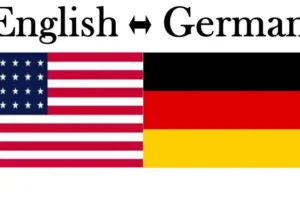


There
are only 200 irregular verbs total in both languages. This implies that you may
reasonably anticipate how a verb will appear within a particular sentence.
Some
of the irregular verbs that are shared by both languages include the verbs
“to have,” “to be,” and “to become,” though the
whole list of irregular verbs is much longer.
She,
he, and it are the only pronouns in English that receive a specific verb
ending, which adds a -s to the end of the verb when it isn’t followed by the
word “to be.” Similar to this, only “I,” “s/he,”
and “it” have distinct “to be” conjugations; everything
else receives “are.”
In
contrast, only the verb forms “Sie,” “sie (pl),” and
“wir” in German receive the -en ending, while all other verb forms
have a different ending. The’sind’ form of the verb “to be”
exclusively applies to these three pronouns. The conjugations of the regular verb
“run/rennen” in both languages are listed here to help make things a
little clearer.
English regular
conjugations
I
–> run, (am -ing)
You
–> run, (are -ing)
S/he,
it –> runs, (is -ing)
They
–> run, (are -ing)
We
–> run, (are -ing)
German regular conjugations:
Ich
–> renne (-e)
Du
–> rennst (-st)
Er,
sie, es –> rennt (-t)
Sie,
sie –> rennen (-en)
Wir
–> rennen (-en)


